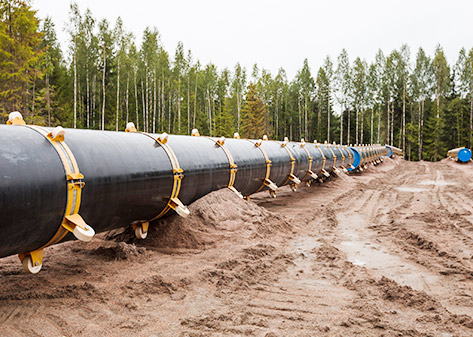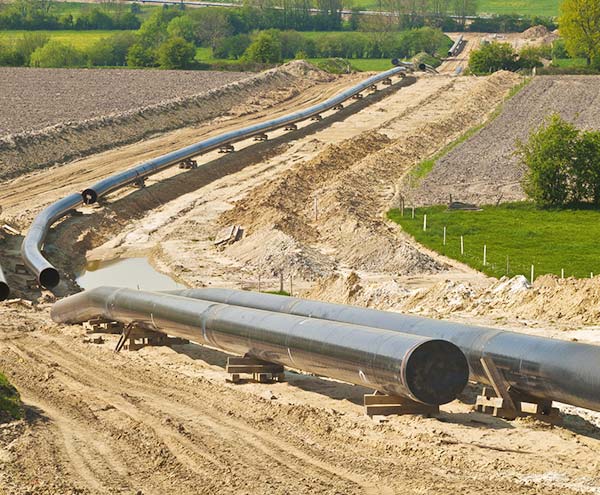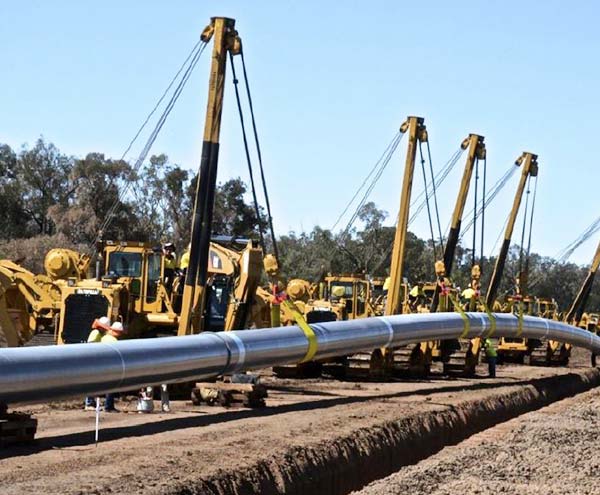Stainless steels encompass several classes of alloys on the basis of their crystalline microstructure. One such classification is the duplex variety. The four main classes of stainless steel include austenitic, ferritic, martensitic as well as a duplex. While austenitic stainless steels have an FCC microstructure, ferritic classes have a BCC structure, martensitic has a body-centered tetragonal form crystalline microstructure. On the other hand, the microstructure of a duplex stainless steel alloy includes both austenite and ferrite in a 50% ratio, which is what gives these steels their unique mechanical and corrosion resistance properties.

| GRADES | TEMPERATURE | YOUNG'S MODULUS | THERMAL EXPANSION COEFFICIENT | SPECIFIC HEAT CAPACITY | THERMAL CONDUCTIVITY | ||
| C | F | GPA | 10−6K1 | J KG−1 K−1 | WM−1 K−1 | ||
| Ferritic | A516* | 20 | 68 | 205 | 12.5 | 450 | 60 |
| S43000 | 20 | 68 | 205 | 10 | 480 | 22 | |
| S44700 | 20 | 68 | 205 | 10 | 480 | 21 | |
| Auslenitic | S30400 | 20 | 68 | 205 | 16 | 520 | 16 |
| N08904 | 20 | 68 | 205 | 16 | 544 | 15 | |
| Duplex | S31803 | 20 | 68 | 200 | – | 470 | 14 |
| 100 | 212 | 190 | 13 | 500 | 15 | ||
| 200 | 392 | 180 | 14 | 530 | 17 | ||
| 300 | 572 | 170 | 14.5 | 560 | 18 | ||
| S32304 | 20 | 68 | 200 | 13 | 470 | 16 | |
| Superduplex | S32750 | 20 | 68 | 200 | 13 | 470 | 14 |
| S32760 | 20 | 68 | 190 | 12.8 | 482 | 12.9 | |
| S32520 | 20 | 68 | 205 | 13.5 | 450 | 17 | |
| 100 | 212 | 195 | 14 | 500 | 18 | ||
| 200 | 392 | 185 | 14.5 | 530 | 19 | ||
A516*= carbon steel
| EUROPE EN | BRITISH BS | AISI | DIN | SS | TYPICAL COMPOSITION (%) | ||||
| C | CR | NI | MO | OTHER | |||||
| 1.4362 | X2CrNiN23-4 | 2327 | 0.03 × | 22 | 4 | 0.4 | 0.4 Cu | ||
| 1.4410 | 2328 | 0.03 × | 24 | 6 | 3 | ||||
| 1.4460 | 329 | X4CrNiMoN27-5-2 | 2324 | 0.05 × | 25 | 5 | 1.5 | ||
| 1.4462 | X2CrNiMoN22-5-3 | 2377 | 0.03 × | 22 | 5 | 3 | |||
| 1.4501 | 318S13 | 0.03 × | 24 | 6 | 3 | 0.5 W | |||
| 1.4507 | 0.03 × | 24 | 6 | 3 | 1.0 Cu | ||||
| DUPLEX TYPE | PREN |
| Standard | Approximately 35 |
| Lean | 25-30 |
| Duplex | Above 40 |
Since there are multiple grades of duplex and stainless steel grades, the advantages, and disadvantages associated with each grade are dependent on the application it is to be used for along with the chemical composition of the grade. For instance, austenitic stainless steel grades belonging to the 300 series have excellent ductility, improved resistance to corrosion, and good mechanical strength. Their chemistry could be altered by lowering or increasing the content of carbon for specific purposes such as welding or use in elevated temperatures. Those stainless steels belonging to the martensitic and ferritic classes have better hardness, and the corrosion resistance properties are lower in comparison to austenitic and the duplex variety of stainless steels. Because duplex stainless steels are highly alloyed, the cost of using these metals may be high. However, the cost of grades like 904L is higher than some standard duplex stainless steels. Aside from the cost factor, there are very few stainless steel alloys that could be used at elevated temperatures, unlike nickel alloys such as Monel, Inconel, etc. Another disadvantage of these alloys is their impact resistance, which is not very good at temperatures as low as -50°C.

● Shielded metal arc welding (SMAW)
● Flux-cored arc welding (FCW)
● Gas metal arc welding MIG (GMAW)
● Gas tungsten arc welding TIG (GTAW)
● Submerged arc welding (SAW)
● Plasma arc welding (PAW)
● Resistance welding
● Laser welding
● High-frequence welding
Passivation is a phenomenon that occurs in stainless steels that contain higher contents of chromium in their alloy. Duplex steels have chromium ranging between 19% to about 32% in their alloys. Since duplex stainless steels contain high levels of chromium in their alloy, it is possible for the surface of these components to form a passivated oxide layer over the surface of the steel. However, some stainless steel alloys possess insufficient chromium content to form this self-repairing passivation oxide layer, leading to the material getting corroded by oxidation. Oxidation is a common problem associated with low chromium stainless steel. It is possible to improve the corrosion resistance properties of these stainless steel alloys by subjecting them to a passivation treatment.
Pickling is the elimination of scales caused by exposing the material to elevated temperatures. Scales that were also caused by an adjacent chromium layer of metal could be eliminated by pickling by means of chemical treatments from the external body of stainless steel alloys. The use of mechanical processes often harms or damages the surface of the metal. To avoid such injurious defects, it is easier to eliminate the excess metals via the use of chemical washes, as they effectively eliminate the extra layer from the surface of stainless steel. This process makes use of acidic solutions including nitric (HNO3) and hydrofluoric (HF) acids
bimetallic corrosion, or otherwise known as galvanic corrosion is an electrochemical process that occurs when two dissimilar metals are submerged in a conductive solution and the metals are electrically connected. In this process, while one metal is protected, the other one gets corroded. It is possible to prevent galvanic corrosion by practicing several rules. Materials with similar corrosion potentials must be selected, the electrical connection must be broken down, by means of insulation, and lastly, the application of a coating to both the materials. The application of proper coating prevents the stripping of metals from either the cathode or anode, thereby improving their resistance to corrosion and effectively protecting both the metals.

● Ferritic
● Austenitic
● Martensitic
● and Duplex Steel
● Grade 409
● Grade 416
● Grade 430
● Grade 439
● Grade 303
● Grade 304L
● Grade 309
● Grade 316
● Grade 316L
● Grade 410
● Grade 440C
● 17-4 PH
● 15-5 PH
● 2205: Heat exchangers and pressure vessels
● 2507: Pressure vessels and desalination plants